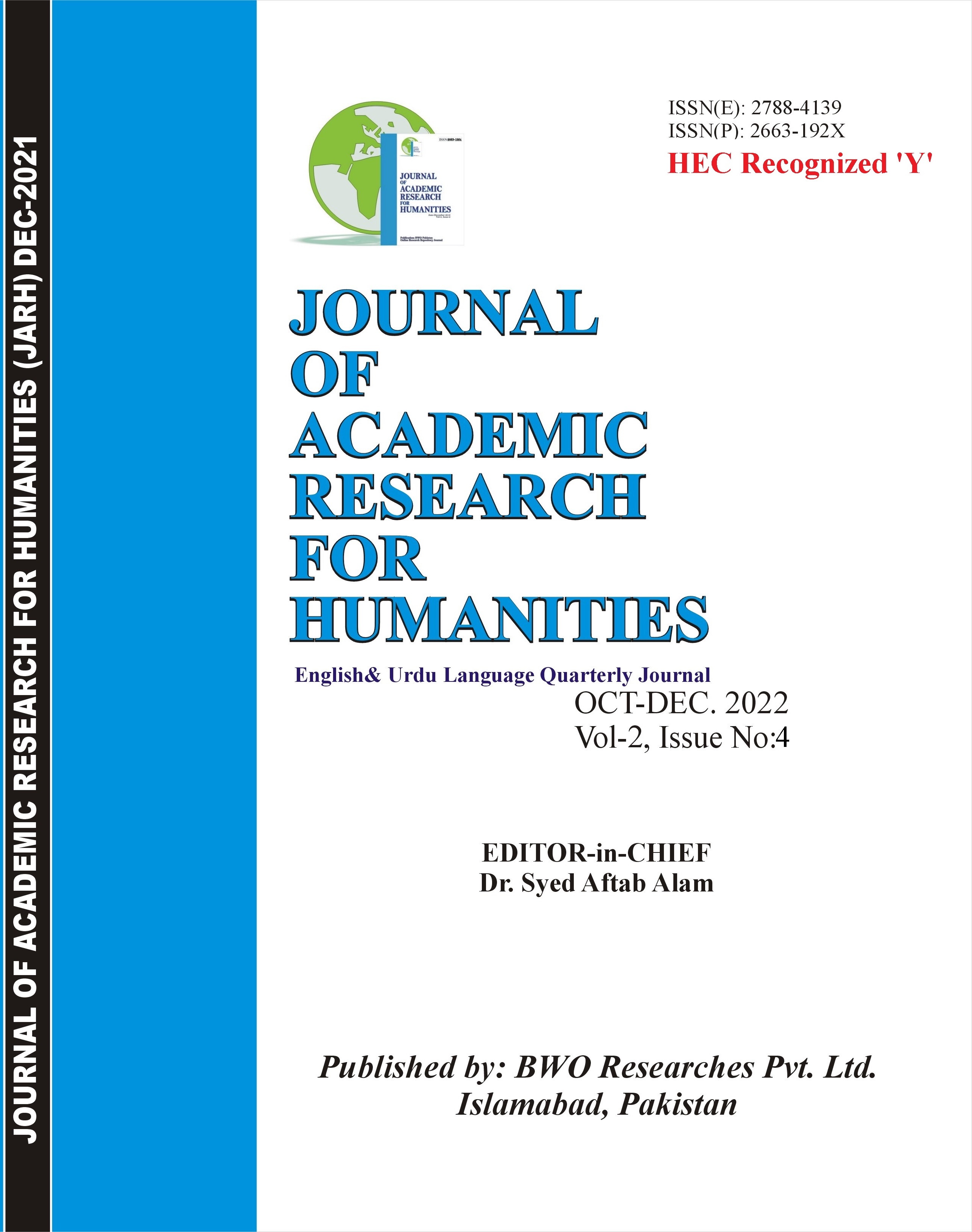Exploring the Effects of Differentiated Instruction on the Comprehension Skills of Students in the English at the Secondary Level

Abstract
This paper aims at finding out the impacts of differentiation on the comprehension skills of students and their learning achievement. The study focused on students with multiple abilities, and different intelligence; who need extra attention, time and curriculum foundation during the course of study time. Differentiated instruction is modifying teaching methodology according to the needs, interests or mental level of the learners so that the ultimate academic goal is achieved. This technique, though slow, yet it been proven to be effective in boosting the classroom learning environment. The mode of the study was quasi-experimental with a pre-test and post-test conducted on 24 students of class IX in English subjects assigned to the experimental & control group. A pre-test on the reading comprehension and solving exercises was taken as a diagnostic assessment. The result produced that 24% (6) students could succeed in reading only the ninth-class English subject. Hence, the differentiated instruction approach was adopted by changing the teaching method i.e. minimizing the reading material according to the needs, intelligence and mental approach of the students, and allowing the learners to read a part of the passage, and solve easy questions related to the passage in groups. Later on, as per planning, a post-test was conducted where the results showed that 68% given students achieved remarkable progress in English reading & writing. This study provided encouraging insights into using differentiated instructions in improving language comprehension skills as compared to traditional teaching methods.
Keywords
Differentiated instruction, mixed-ability, classroom, comprehension skills
References
- Ahmed, I., Thomas, M., & Hamid, S. (2020). Improving Reading Comprehension Skill Through Interactive Reading Strategies of Grade 10th Students at Public Secondary School. Pakistan Journal of Educational Research, 3 (2), 93-109.
- Al-rsa’i, M. S., &Shugairat, M. F. (2019). Technology Driven Differentiated Instruction in Science Teaching. International Journal of Education, 11(2), 15. https://doi.org/10.5296/ije.v11i2.14700
- Cardimona, K. (2018). Differentiating Mathematics Instruction for Secondary-Level English Language Learners in the Mainstream Classroom. TESOL Journal, 9(1), 17–57. https://doi.org/10.1002/tesj.303
- Celik, S. (2019). Can Differentiated Instruction Create an Inclusive Classroom with Diverse Learners in an Elementary School Setting? Journal of Education and Practice, 10(6). https://doi.org/10.7176/JEP
- Chien, C.-W. (2012). Differentiated Instruction in an Elementary School EFL Classroom. TESOL Journal, 3(2), 280–291. https://doi.org/10.1002/tesj.18
- Directorate General Monitoring and Evaluation, S. E. (2021). Annual Report 2020-21. Karachi: Sindh Schools Monitoring System.
- Erickson, C. (2006). Differentiated Instruction: Applying the Work of C.A. Tomlinson in the Primary Literacy Classroom. 1-77.
- Firmender, J. M., Reis, S. M., & Sweeny, S. M. (2013). Reading Comprehension and Fluency Levels Ranges across Diverse Classrooms: The Need for Differentiated Reading Instruction and Content. Gifted Child Quarterly, 57(1), 3–14. https://doi.org/10.1177/0016986212460084
- Fox, J., & Hoffman, W. (2011). The Differentiated Instruction Book of Lists. Jossey-Bass.
- Heydon, R. (2003). Literature Circles as a Differentiated Instructional Strategy for Including ESL Students in Mainstream Classrooms. In Canadian Modern Language Review (Vol. 59, Issue 3, pp. 463–475). University of Toronto Press. https://doi.org/10.3138/cmlr.59.3.463
- Idara-e-Taleem-o-Aagahi. (2021). Measuring the Impact of COVID-19 on Education in Pakistan.
- Ismajli, H., &Imami-Morina, I. (2018). Differentiated instruction: Understanding and applying interactive strategies to meet the needs of all the students. International Journal of Instruction, 11(3), 207–218. https://doi.org/10.12973/iji.2018.11315a
- James, D., Garbutt, A., & Simister, N. (2017). Quasi-Experimental approaches. Intrac For Civil Society, 1-6.
- Komang Arie Suwastini, N. (2021). Differentiated Instruction for EFL Classroom. Tell-us Journal, 7(1), 14–41. https://doi.org/10.22202/tus.2021.v7i1.4719
- Mills, G. E., & Gray, L. R. (2019). Educational Research (12th ed.). Pearson.
- MOE, Pakistan, (2006). National Curriculum for the English Language. Islamabad: Government of Pakistan.
- NanangSuprayogi, M., & Valcke, M. (2016). Differentiated Instruction in Primary Schools: Implementation and Challenges in Indonesia. In International Scientific Researches Journal (Vol. 72, Issue 6).
- Nurasiah, L., Priatna, B. A., &Priatna, N. (2020). The effect of differentiated instruction on student mathematical communication ability. Journal of Physics: Conference Series, 1469(1). https://doi.org/10.1088/1742-6596/1469/1/012160
- Roy, A., Guay, F., & Valois, P. (2013). Teaching to address diverse learning needs: Development and validation of a Differentiated Instruction Scale. International Journal of Inclusive Education, 17(11), 1186–1204. https://doi.org/10.1080/13603116.2012.743604
- Santangelo, T., & Tomlinson, C. A. (2012). Teacher Educators’ Perceptions and Use of Differentiated Instruction Practices: An Exploratory Investigation. Action in Teacher Education, 34(4), 309–327. https://doi.org/10.1080/01626620.2012.717032
- Smale-Jacobse, A. E., Meijer, A., Helms-Lorenz, M., & Maulana, R. (2019). Differentiated Instruction in Secondary Education: A Systematic Review of Research Evidence. Frontiers in Psychology, 10.
- Suprayogi, M. N., Valcke, M., & Godwin, R. (2017). Teachers and their implementation of differentiated instruction in the classroom. Teaching and Teacher Education, 67, 291–301. https://doi.org/10.1016/j.tate.2017.06.020
- Tomlinson, C. A. (2001). How to Differentiate Instruction in a Mixed-Ability Classrooms (2 ed., Vol. 1). Alexandria, USA: Association for Supervision and Curriculum Development.
- Tomlinson, C. A., & Imbeau, B. M. (2010). Leading and Managing a Differentiated Classroom. Alexandria, USA: ASCD.
- Tomlinson, C. A., Brighton, C., Hertzberg, H., Callahan, C. M., Moon, T. R., Brimijoin, K., et al. (2003). Differentiating Instruction in Response to Student Readiness, Interest, and LearningProfile in Academically Diverse Classrooms: A Review of Literature. Journal for the Education of the Gifted, 119-145.
- White, H., & Sabarwal, S. (2014). Quasi-Experimental Design and methods. UNICEF.
- Walpole, Sharon, & McKenna, M. C. (2007). Differentiated reading instruction : strategies for the primary grades. Guilford Press